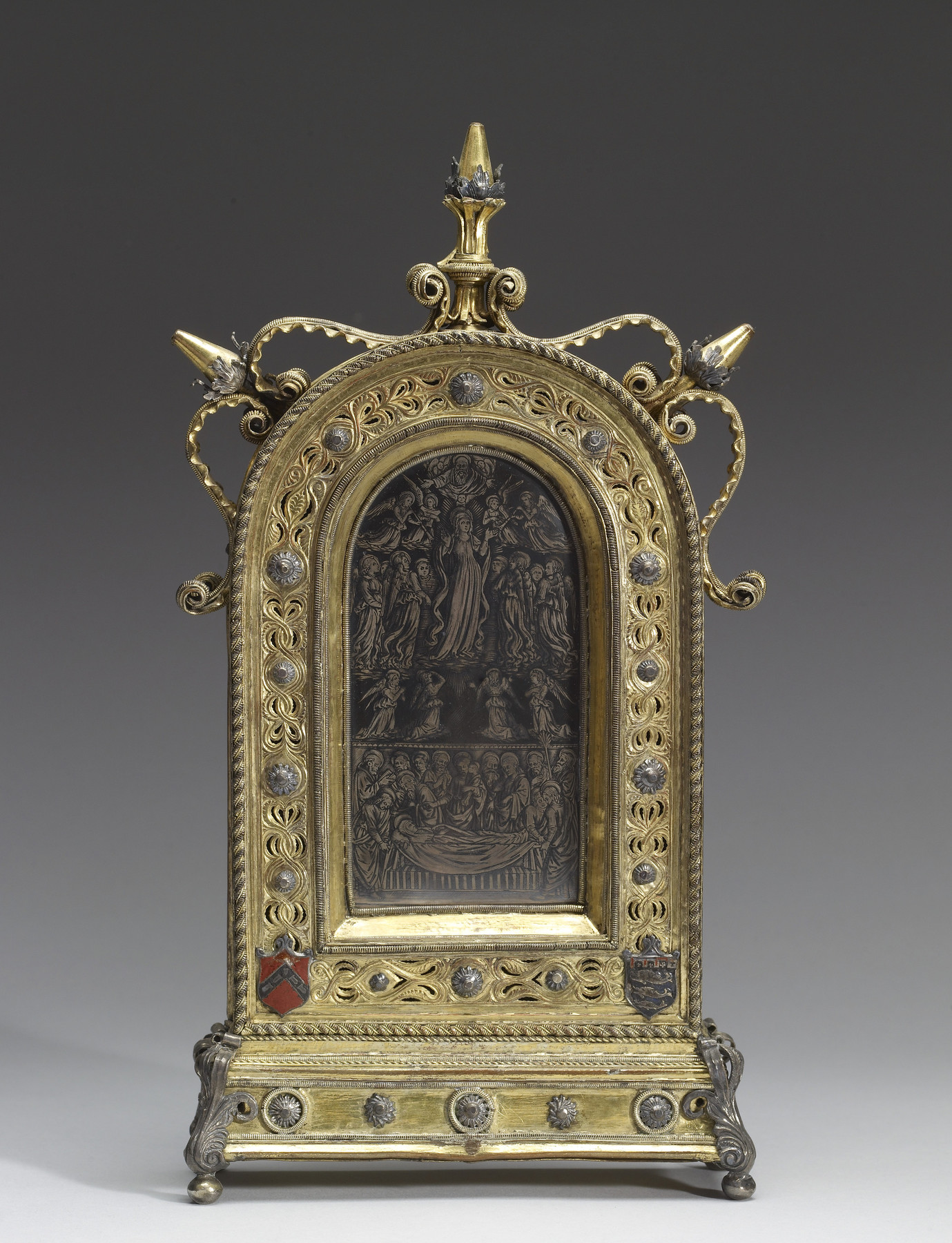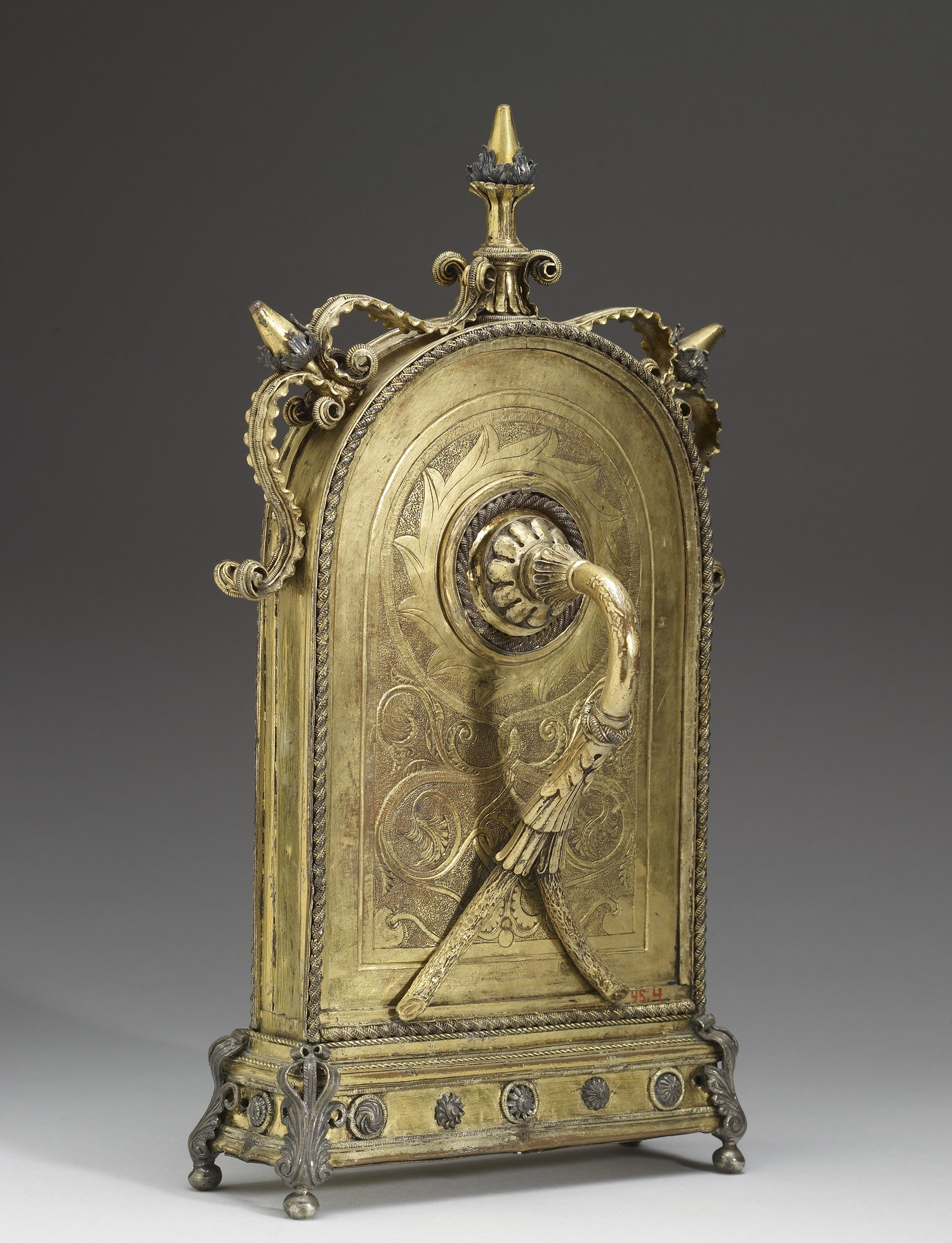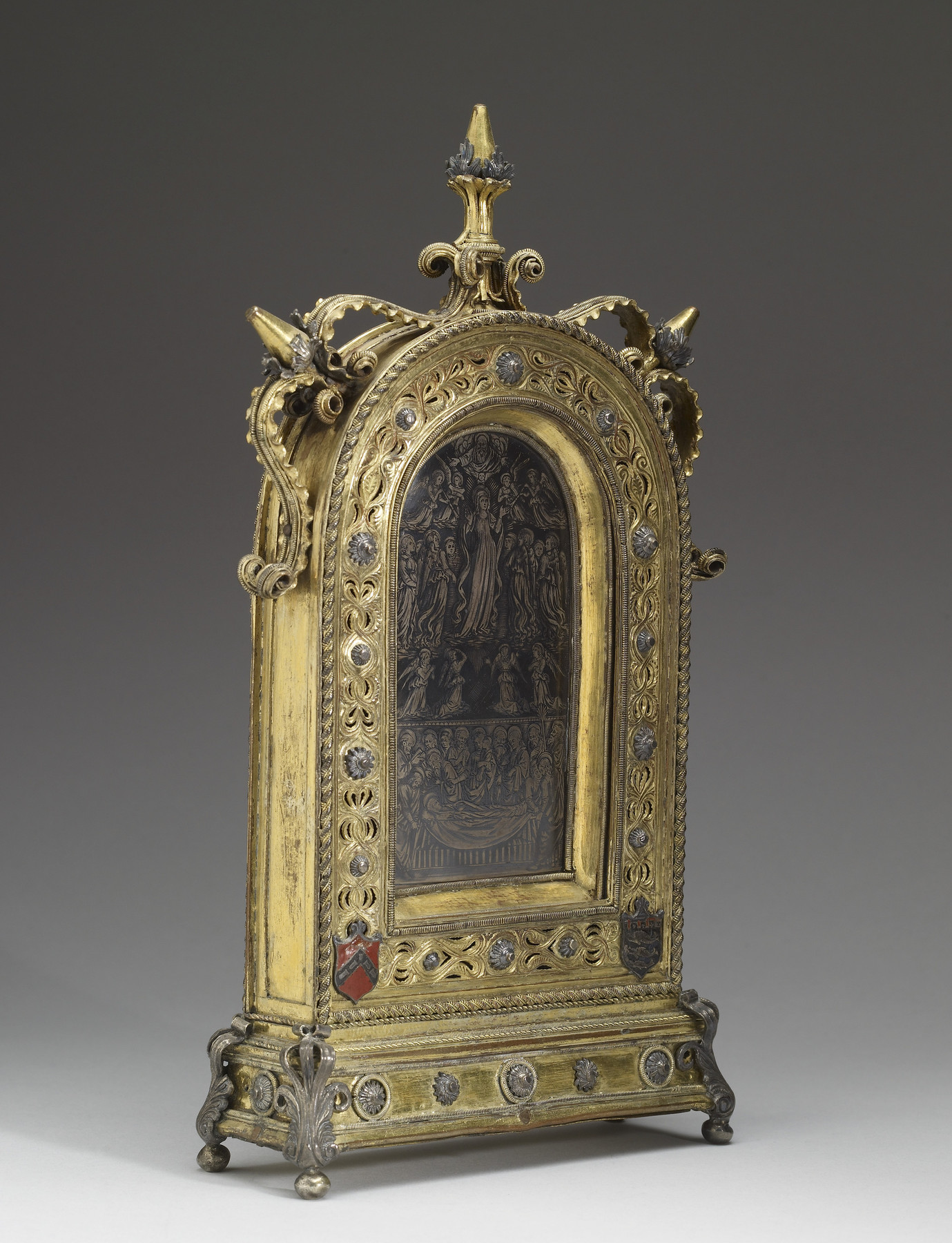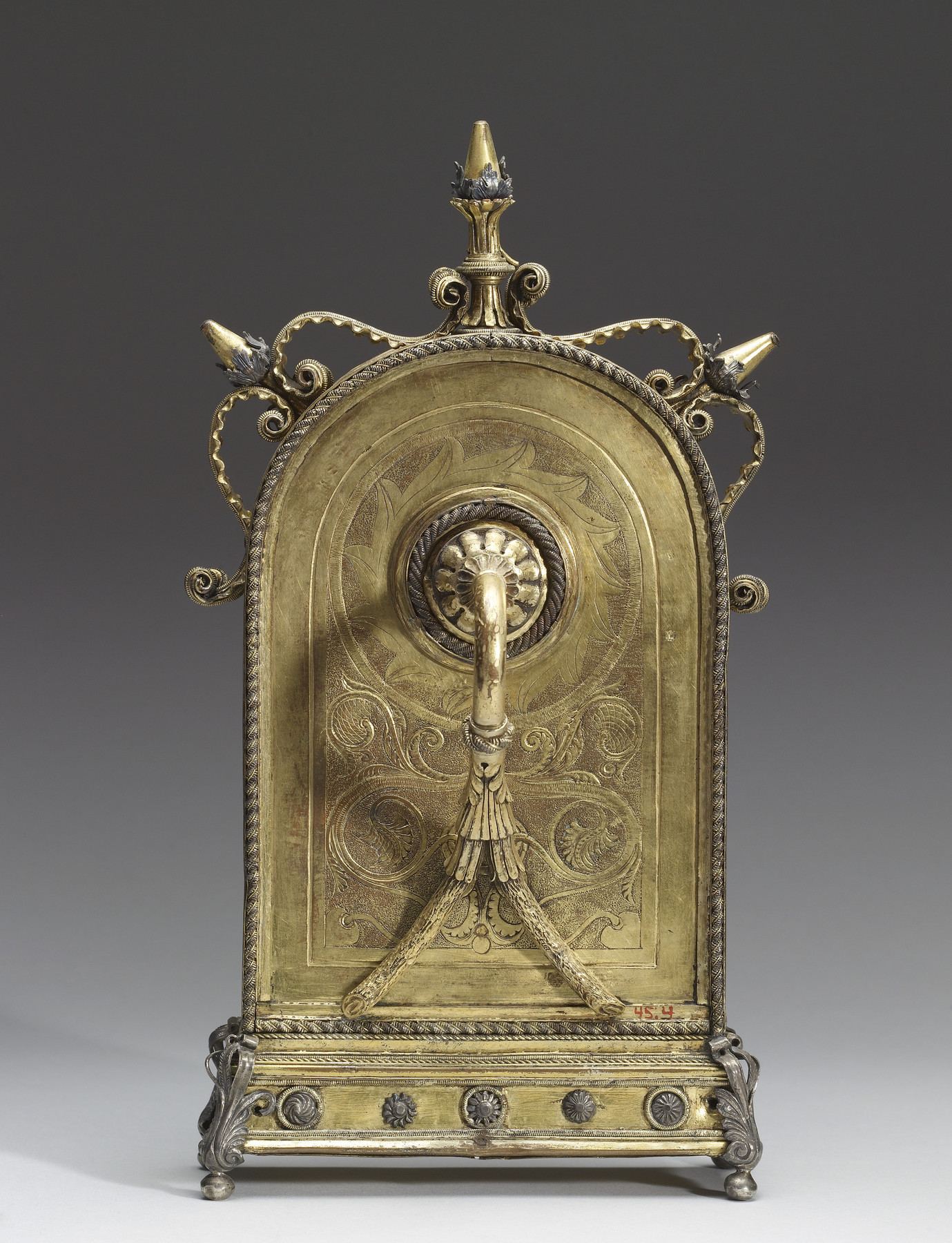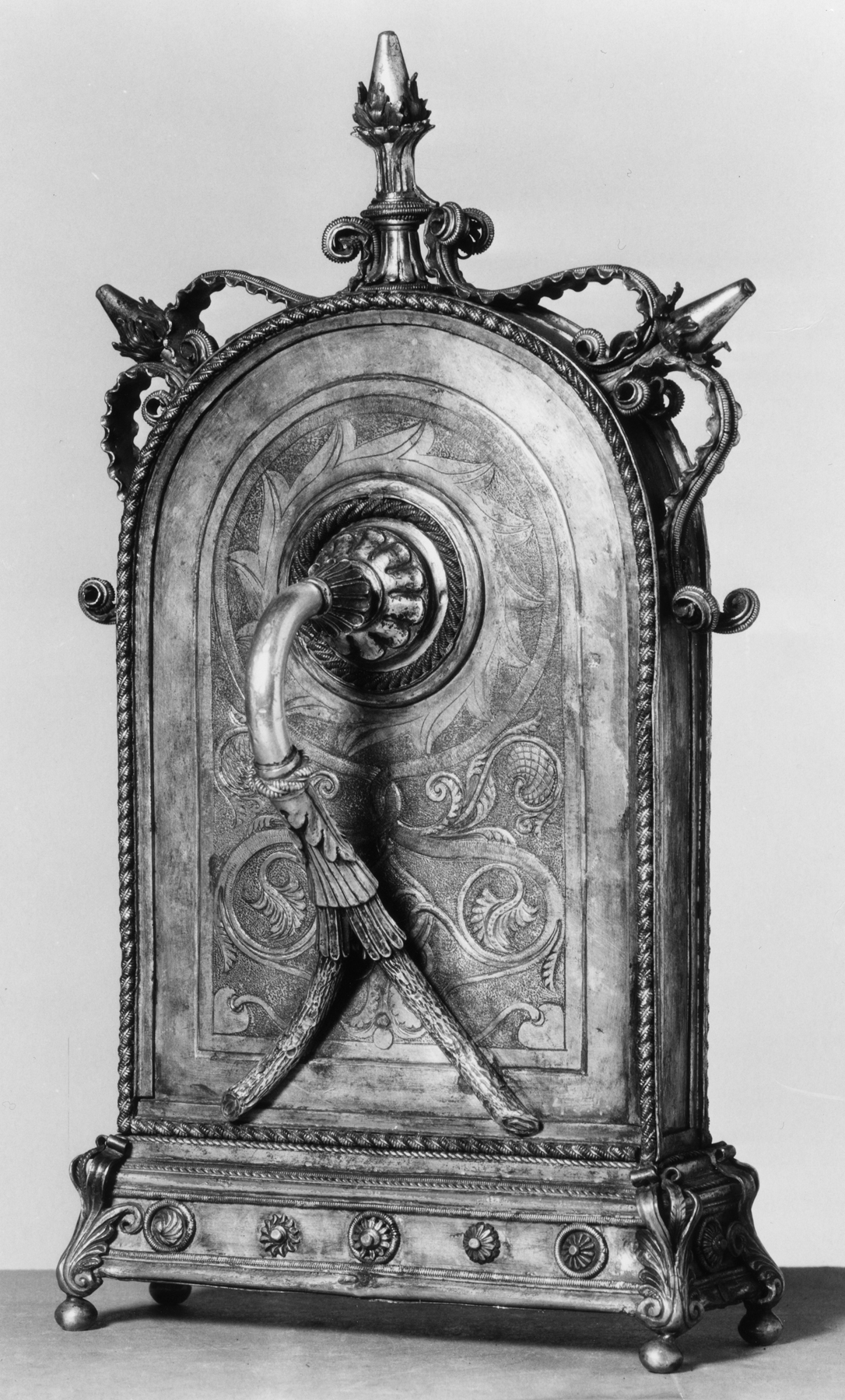Pax with the Dormition and Assumption of the Virgin
(Renaissance Europe )
A pax ("peace" in Latin) is a tablet with an image that was held up by the priest to be kissed by the laity before Communion. Depicted here is the Dormition (the final sleep of the Virgin); Christ holds his mother's soul in the form of an infant. Above, Mary is assumed (taken up) into heaven and greeted by God the Father. The coats of arms of the Neroni and Pandolfini families suggest that this pax was given to a Florentine church in celebration of a marriage between them.
The black lines are created in the silver surface by using niello, a black powder made from metallic sulfur compounds. It was spread over incisions in the silver and, when heated, became solid. The niello was then made level with the metal surface by polishing.
Liturgical items as well as reliquaries were among the treasures accumulated over time by many aristocratic Catholic families.
Provenance
Provenance (from the French provenir, 'to come from/forth') is the chronology of the ownership, custody, or location of a historical object. Learn more about provenance at the Walters.
London; Henry Walters, Baltimore, 1912 [mode of acquisition unknown]; Walters Art Museum, 1931, by bequest.
Conservation
| Date | Description | Narrative |
|---|---|---|
| 1/18/1971 | Examination | examined for condition |
| 7/1/1971 | Treatment | cleaned |
| 8/29/1975 | Treatment | cleaned |
Geographies
Italy, Florence (Place of Origin)
Measurements
11 1/4 x 5 3/4 in. (28.6 x 14.6 cm)
Credit Line
Acquired by Henry Walters, 1912
Location in Museum
Accession Number
In libraries, galleries, museums, and archives, an accession number is a unique identifier assigned to each object in the collection.
In libraries, galleries, museums, and archives, an accession number is a unique identifier assigned to each object in the collection.
45.4

